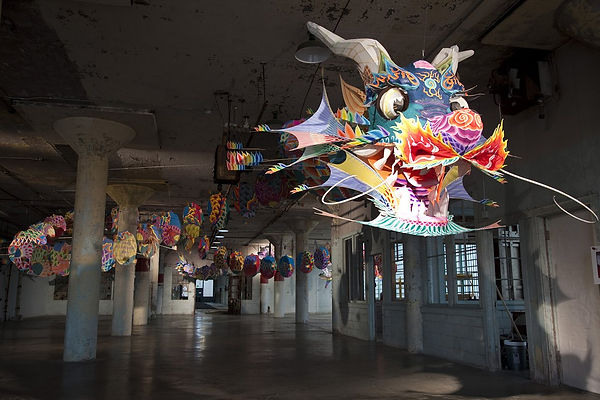

Ai Weiwei
Ai Weiwei is a living, 60 year old contemporary artist from Beijing, China. He specializes in sculpture, architecture, installation, curating, film, and photography. He is also an activist, active socially, politically, and culturally. He stands against Chinese government corruption and is known for being highly critical of China’s stance on rights and democracy. Weiwei’s father was a liberal poet who was denounced by the Anti-Rightist Movement, and him and his family were sent to a labour camp. The family finally returned back to Beijing after 17 years away, all of Ai Weiwei’s early life. After returning, Weiwei joined the Beijing Film Academy where he studied animation. He then moved to the United States (1981-1993) where he first attended several schools (Parsons, Art Students League of New York,…) and later dropped out where he then discovered Andy Warhol and Marcel Duchamp, and began playing with altering readymade objects. Looking at some of Weiwei's work, the influences of these artists in his work is recognizable. I appreciate this artist's openness in exploring art through different mediums and mixed media.




Weiwei’s works cover many mediums. Ai Weiwei is a versatile artist, in my opinion, a well-rounded artist. He is known for his photography (New York City photographs), his documentaries on the Chinese government, sculpture, architecture, and his recently released music album. One of his infamous works is the Coca Cola Vase (1994), in which he added the widely consumed soft-drink logo to a Han Dynasty urn, a juxtaposing mixture of tradition versus commercial. Weiwei served as an artistic consultant in the design of the “Bird’s Nest” stadium for the 2008 Olympics which turned out to be metallic bird nest, where twigs were replaced with giant strips of steel wrapping around and over the Beijing stadium. Sunflower Seeds in 2010, he scattered 100 million porcelain seeds in Tate Modern hand painted by 1600 Chinese artisans. This was about the loss of individuality in mass consumption.
As each work speaks for itself, all of his works are bold statements. They are intentional pieces with purposes, in most cases, for a better China, a less corrupt China. In one interview he expressed how he himself wasn’t the dissident artist, that he saw China as the dissident. He is simply an artist with strong feelings, specifically against the Chinese government, and his art captures and expresses his complex feelings and emotions.
As an artist, I aspire to have the confidence to express my passionate feelings and emotions through a wide range of different mediums. This artist feels relatable because he has an interest in dabbling in many different art forms, and in my opinion successfully does so with conviction. I am into dance, costuming, film, photography, and music, and in researching this artist, I feel hopeful that one day I will be able to use and incorporate all my interests and hobbies in my career.

